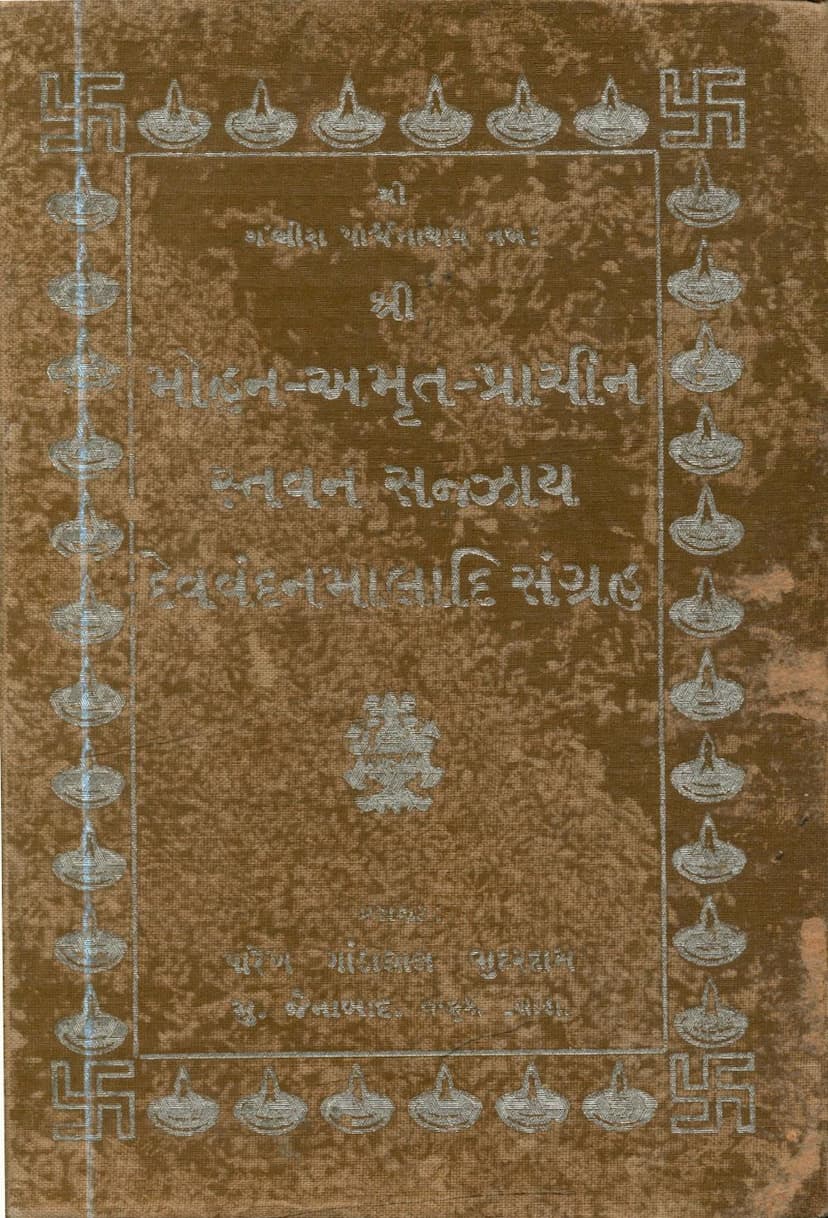Prachin Stavan Sazzay Devvandanmaladi
Added to library: September 2, 2025

Summary
This Jain text, titled "Prachin Stavan Sazzay Devvandanmaladi," authored by Gandalal Bhudardas Parekh and published by the same, is a collection of devotional hymns, prayers, and verses used in Jain worship. The catalog link provided is for exploration, indicating it's a resource for Jain studies.
The text is structured into six main sections:
-
Chaityavandan (Forms of Worship): This section contains various forms of worship offered before Jain temples and idols. It includes specific chaityavandans for different tithis (lunar days) and festivals like Beej (the 2nd lunar day), Panchami (the 5th lunar day), Ashtami (the 8th lunar day), Maun Ekadashi (the 11th lunar day of silence), and Paryushan. It also includes chaityavandans for specific Tirthankaras likerushabhdev, Parshvanath, and Mahavir Swami, as well as general Tirthankara worship and the Siddha Chakra worship.
-
Stavan (Hymns): This section is a collection of hymns dedicated to various Tirthankaras, particularly Neminath, Parshvanath, Mahavir Swami, and others. It also includes hymns for festivals like Diwali and specific occasions like the 'Halaradu' (lullaby) for Mahavir Swami.
-
Dhalia (Versified Narratives): This part presents narratives and stories in a versified format, often describing the legends, virtues, and miracles associated with Tirthankaras, events like the "Dash Pachkhan" (ten vows), and important Jain concepts like the six avashyaks (essential duties) and the Vardhaman Tapa (a specific penance). It also includes other useful subjects like the "Shatrunjay Uddhar" (liberation of Shatrunjay), "Punya Prakash" (illumination of merit), and "Meghashah's Dhalia."
-
Thoy-Stuti (Praise-Gratitude): This section comprises praises and hymns dedicated to various Tirthankaras and significant Jain events or places like Nandi Ishwar Dwip. It covers praises for specific tithis and festivals, highlighting their spiritual significance.
-
Parchuran Vibhag (Miscellaneous Section): This section includes additional useful verses and teachings, such as invocations before worship, the "Stuti Chavis" (twenty-four praises), khama-samana verses related to Shatrunjaya's twenty-one names, the Qawwali of initiation, and discussions on topics like the form of samayik (equanimity), ashrav (influx of karma), and mithyatva (false belief).
-
Sazzaya (Musical Verses): This is the largest section, containing a collection of sazzayas, which are devotional songs or verses set to music. It includes sazzayas for various tithis, festivals, and important figures and stories from Jain tradition, such as the sazzayas of Vardhaman Tapa, those describing the lives of various monks and nuns (like Gaj Sukumar, Dhanashali Bhadra, Metaraji Muni), the ten avashyakas, and the five great vows.
The text also includes a biographical sketch of Smt. Surajben, the widow of Seth Kalidas Manekchand, who contributed to the publication of the book. Her life is presented as an example of religious devotion and charity, highlighting her dedication to Jain principles and her support for spiritual knowledge dissemination. The book is dedicated to the lineage of esteemed Jain monks. The introduction details the contents of each of the six sections, providing a structured overview of the devotional material compiled within. The text is written in Gujarati and emphasizes the importance of Jain rituals and teachings.